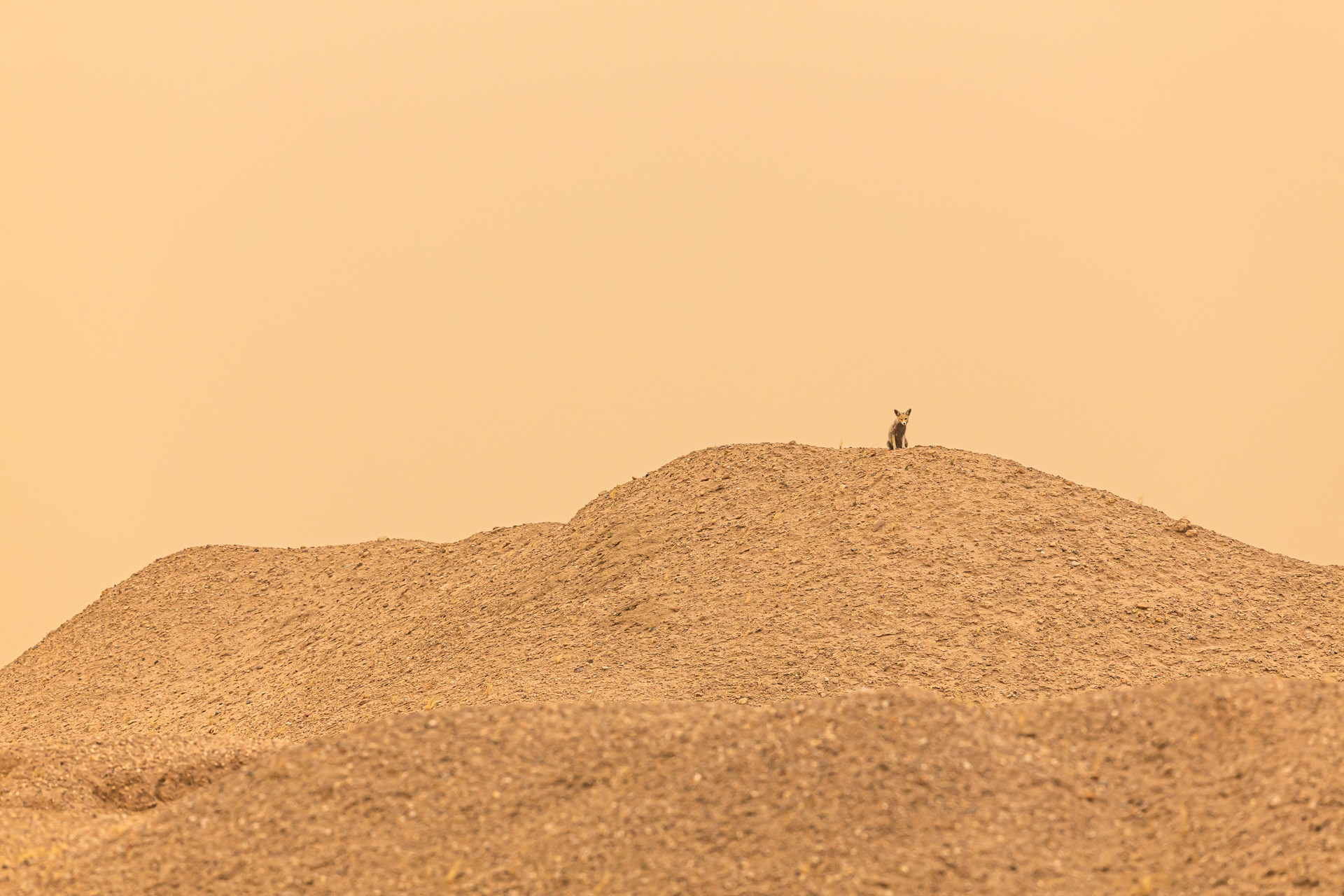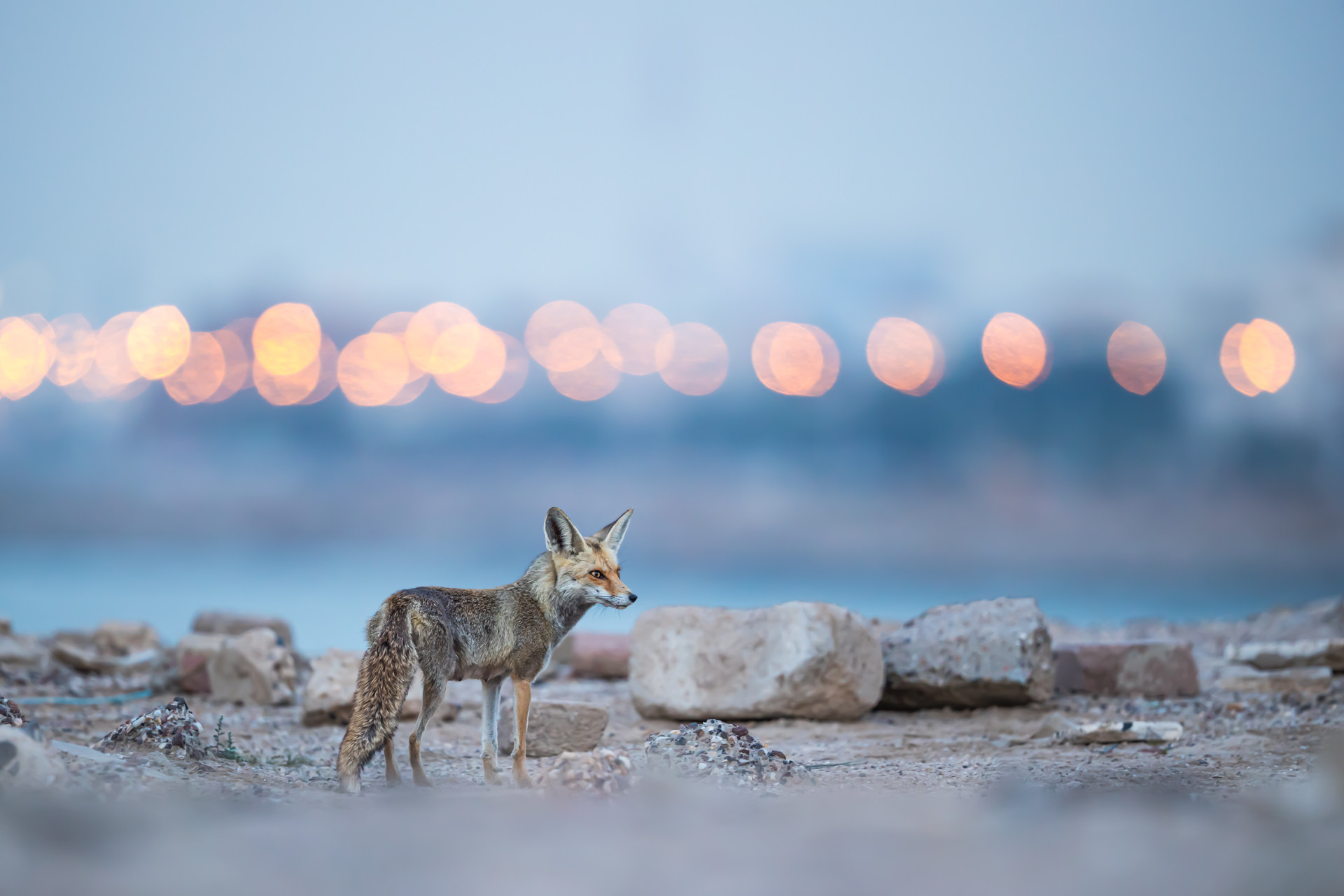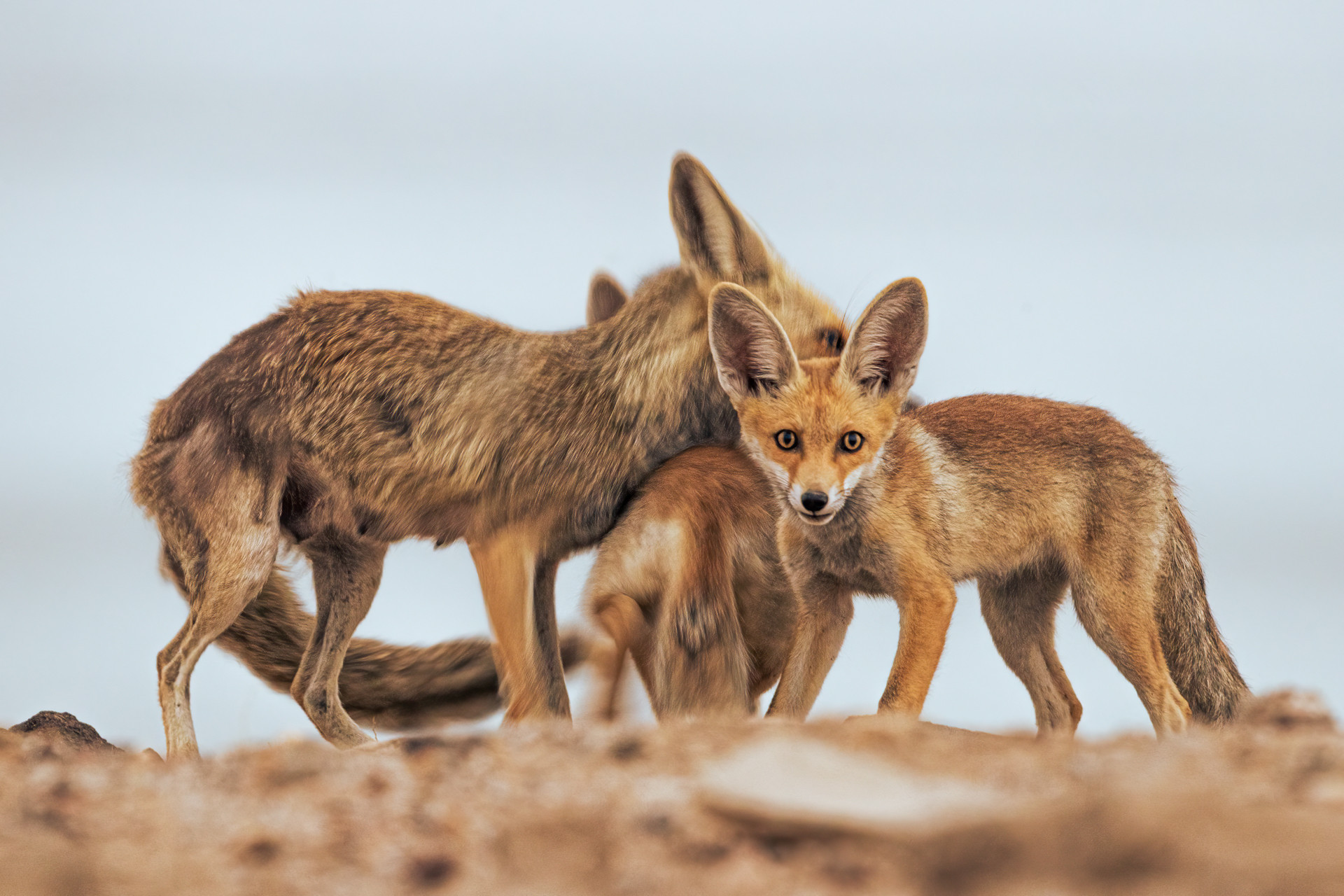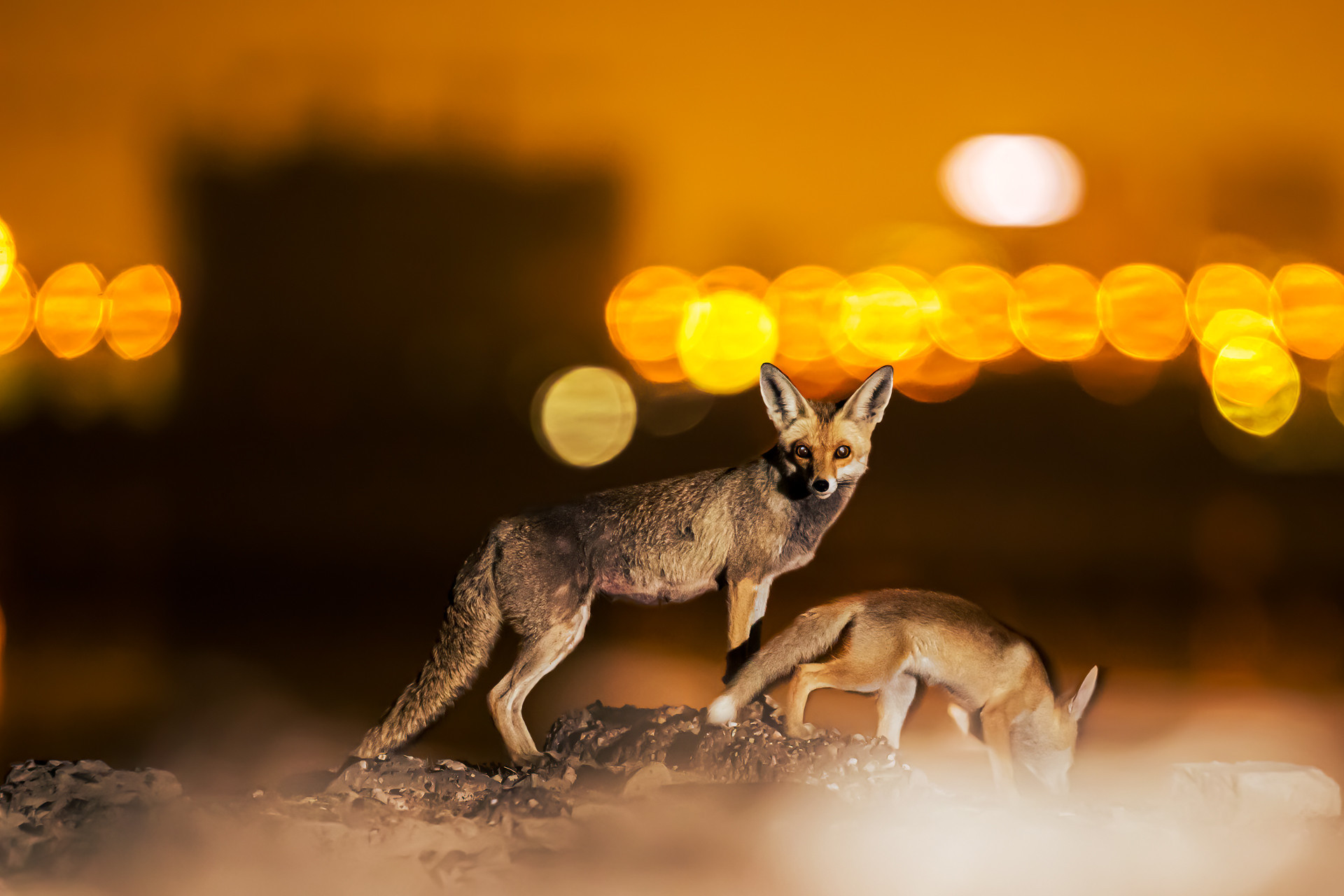The Arabian Red Fox (Vulpes vulpes arabica) is the smallest subspecies of the Red Fox. Like most other Arabian mammals, they are smaller and lighter than their European equivalents.
The photographer came across two families near Kuwait City, each with a set of parents and five kittens. One of the dens was closer to the shore, and the other was in an old palm reserve.
Unlike in Europe, where foxes are regularly sighted close to human-inhabited spaces, in Kuwait and other Arab countries, these canids are not all that welcome. A quick search of foxes on Google (in Arabic) is bound to throw up a lot of awful videos of people harming and killing foxes.
At the same time, the Red Fox population is increasing in the Arabian Peninsula, aided in part by the increasing number of food-rich sites associated with human activity in the region.









